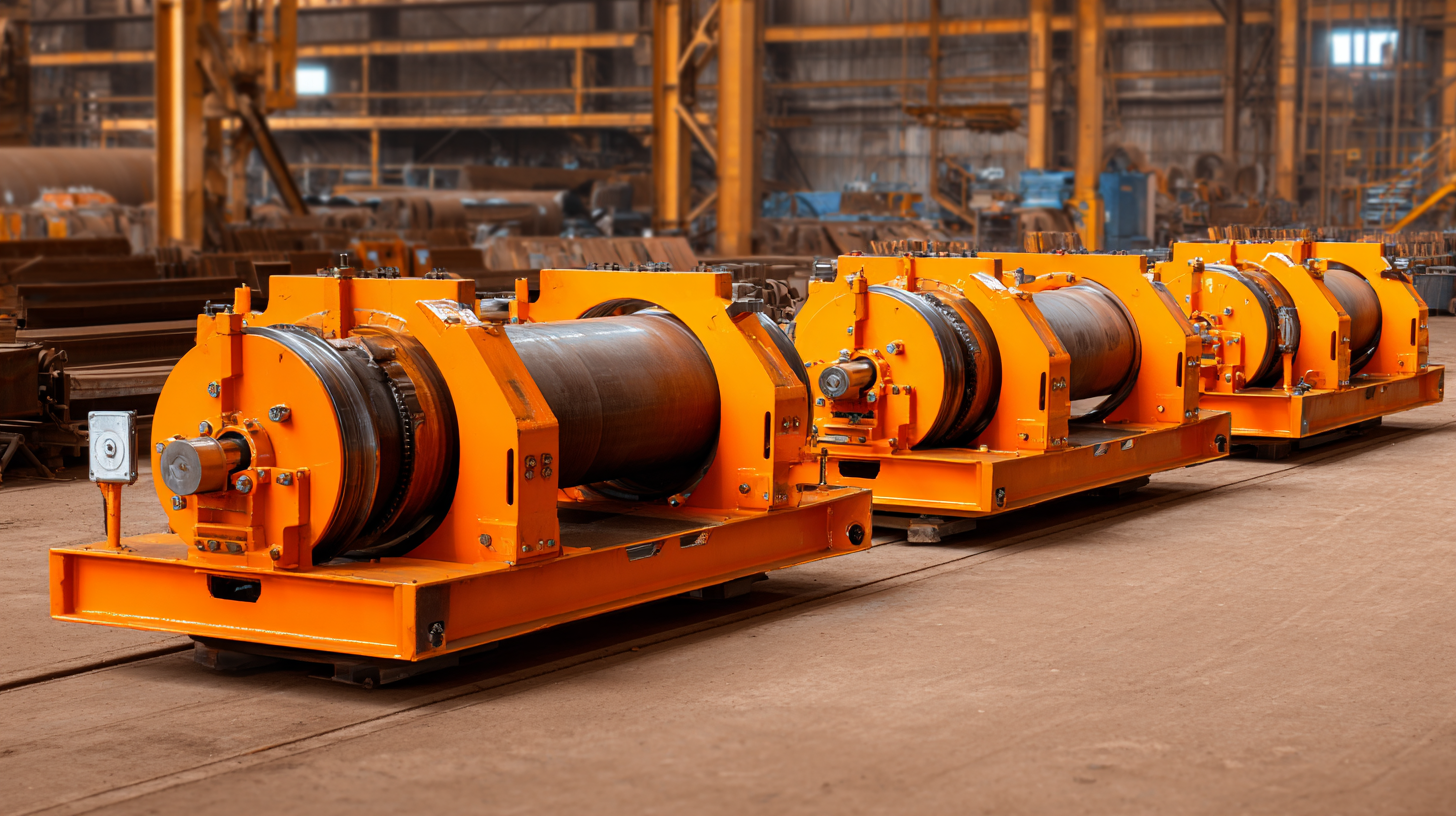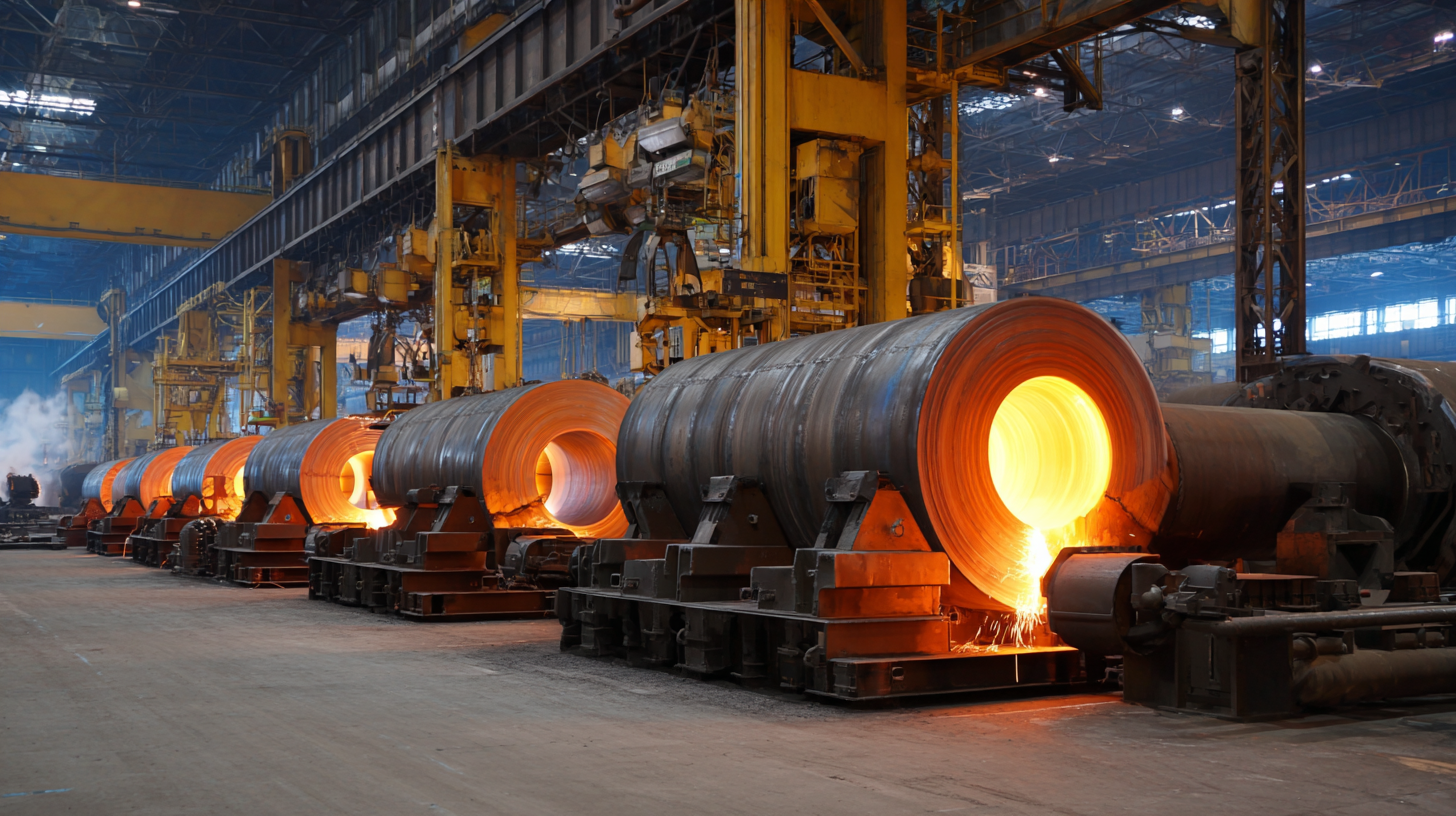When it comes to welding projects, the selection of the right equipment can significantly impact the quality and efficiency of your work. Among the myriad of tools available, tank turning rolls play a crucial role in facilitating the safe and effective handling of cylindrical objects during welding processes. These specialized rollers enable welders to rotate heavy tanks with precision, ensuring comprehensive access to every seam and weld joint. However, choosing the correct tank turning rolls can be a daunting task, given the variety of options tailored to different project needs, sizes, and weights. In this ultimate guide, we will explore key factors to consider when selecting tank turning rolls, including load capacity, design features, and operational efficiency, equipping you with the knowledge necessary to make informed decisions that enhance your welding projects.

Tank turning rolls are vital equipment in welding applications, particularly when working with cylindrical objects such as tanks. By providing a stable and efficient way to rotate heavy workpieces, these tools enhance productivity and precision during the welding process. According to industry reports, using tank turning rolls can reduce downtime by up to 30%, as operators can weld more efficiently without manual handling.
When selecting tank turning rolls for your projects, consider the load capacity and the range of motion required. It is vital to choose a roll system that can support not only the weight of the tank but also accommodate its dimensions, ensuring safety and stability. For instance, a roll set with adjustable height can improve versatility in various welding scenarios.
Tips:

When selecting tank turning rolls for welding projects, several key factors must be considered to ensure optimal performance and safety. Firstly, the weight capacity of the turning rolls is critical. It's essential to choose rolls that can support the specific weight of the tanks being worked on. According to industry reports, ratings for heavy-duty tank turning rolls typically range from 10,000 to 80,000 pounds, depending on the application. This ensures that the equipment remains stable and effective throughout the welding process.
Another important aspect to consider is the adjustability of the tank turning rolls. Many modern turning rolls offer adjustable widths to accommodate tanks of various sizes. This flexibility is particularly valuable for workshops that handle multiple projects, as it allows for seamless changes without the need for additional equipment. Moreover, features such as powered rotation and variable speed controls can enhance productivity. Reports from manufacturers indicate that using advanced turning rolls can reduce welding time by up to 30%, making them a worthwhile investment for any welding operation focused on efficiency and quality.

When selecting tank turning rolls for welding projects, understanding the pros and cons of different types is crucial for optimal results. Generally, tank turning rolls can be classified into two main categories: driven and idler rolls.
Driven rolls feature a powered mechanism that ensures precise rotation and are ideal for larger projects requiring heavy weight capacity and consistent speed. According to industry reports, driven rolls can accommodate loads exceeding 100 tons, making them suitable for industrial-scale applications.
On the other hand, idler rolls are typically used for lighter tanks and are more cost-effective. They rely on gravity and can often support loads up to 50 tons. While idler rolls are easier to maintain and use less power, they may not provide the same level of control and accuracy as driven rolls.
A survey conducted by the Welding Equipment Manufacturers Association indicates that over 60% of fabrication shops prefer driven rolls for their efficiency, while smaller operations lean towards idler models for their affordability. By comparing the specific needs of your project against these options, you can make a more informed decision that enhances productivity and welding quality.
When it comes to ensuring the longevity of tank turning rolls, regular maintenance is crucial. According to a report by the American Welding Society, proper maintenance can extend equipment life by up to 50%, leading to significant cost savings in industrial operations. Regular inspections should be conducted to identify wear and tear on rollers, bearings, and motor systems. Lubrication should be performed consistently, ideally every 500 hours of operation, to prevent excessive friction and overheating, which can lead to premature equipment failure.
In addition to regular lubrication and inspections, it's essential to keep the working environment clean and free of debris. A clean workspace reduces the risk of contaminants entering the roller mechanisms, which can cause jamming or other operational issues. As highlighted in a study by Fabricating and Metalworking Magazine, implementing a routine maintenance schedule not only enhances the performance of tank turning rolls but also minimizes unexpected downtimes that can disrupt production. Investing in quality maintenance tools and training for operators can further enhance the reliability of these critical components in any welding project.
When employing tank turning rolls in welding tasks, adhering to safety best practices is paramount to ensure both operator well-being and project efficiency. Operators should always conduct a thorough inspection of the equipment before use, checking for any signs of wear or damage that could compromise safety. Properly securing the workpiece is essential; an unstable load can lead to accidents during the turning process. Moreover, it is vital to wear appropriate personal protective equipment (PPE), such as gloves, helmets, and eye protection, to guard against potential hazards associated with welding operations.
In addition to equipment checks and PPE, operators should familiarize themselves with the specific operational guidelines for the tank turning rolls they are using. Training programs that emphasize safe handling techniques and emergency procedures can greatly reduce the risk of incidents. Creating a clean and organized workspace further minimizes distractions and hazards, allowing operators to focus on their tasks safely. By prioritizing these best practices, welding professionals can not only enhance their safety but also contribute to the overall success of their projects.
Contact Us
Pemamek Ltd